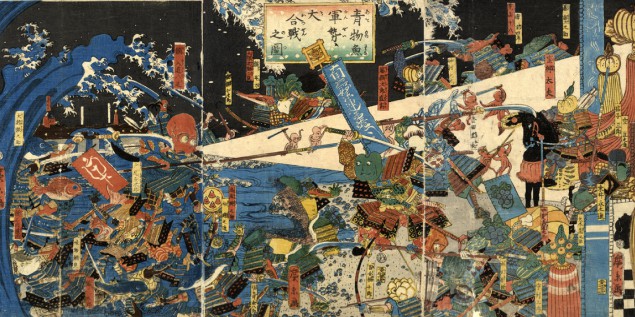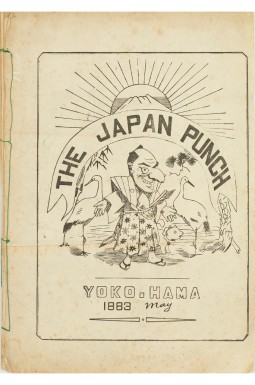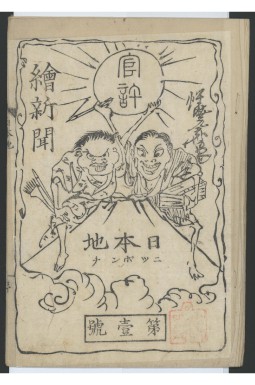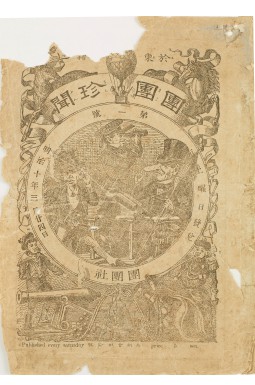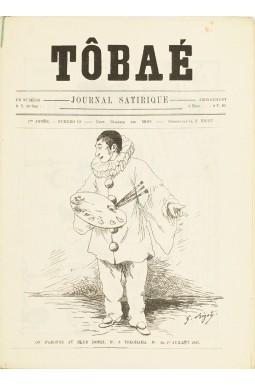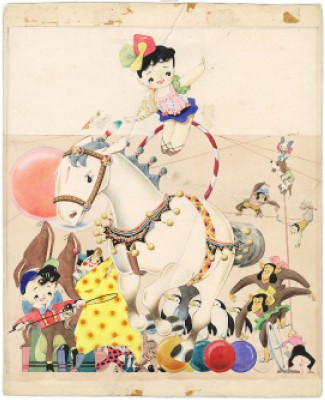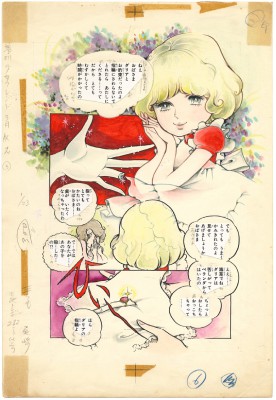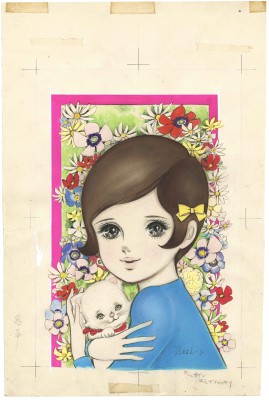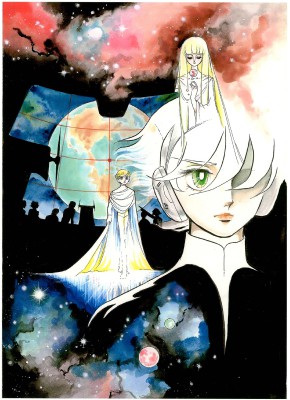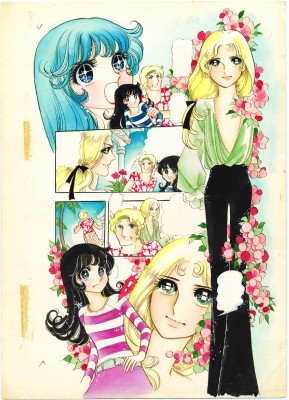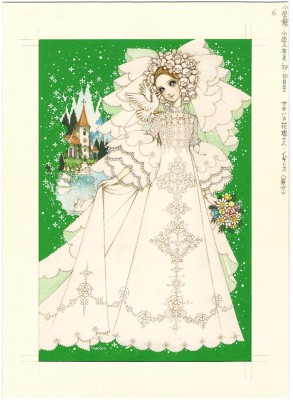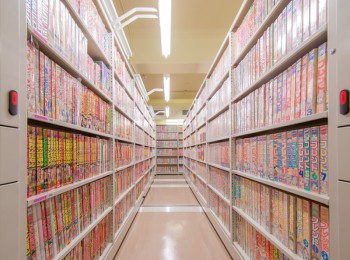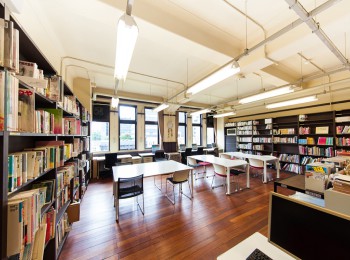In this page, we introduce a range of Edo giga, Meiji-period magazines, and Genga’(Dash).
Edo giga
There are approximately 250 caricature books and woodblock prints from the Edo period held in the museum's collection. Recently, art exhibitions and special-feature magazine editions of ukiyoe prints from the Edo period have been gaining popularity. However, few attempts have been made from the perspective of manga to reinterpret these Edo giga (humorous pictures from Edoperiod). By uncovering the origins and continuity of current manga culture from these unique works, we believe we can provide a new perspective, not only for manga research, but also for art history.
Notably, the majority of the Edo giga and satirical manga magazines from the Meiji and Taisho periods which are held by the museum are from the collection of the late Shimizu Isao, a renowned manga history researcher.
Examples
■Tobae books
In the middle of the Edo period, Tobae books gained popularity for their familiar designs, were printed in large quantities, and were well received by the general public.
In this museum we regard manga as a form of mass media enjoyed by many people, and as such, Tobae books may be one of the foundations for manga. They are the oldest materials held by the museum.
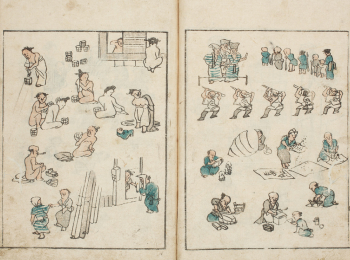
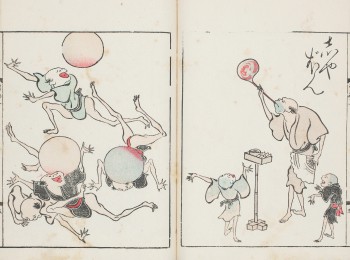
Bunpo soga
Kawamura Bunpo, 1800 (Kansei 12)
Tobae akubitome
Takehara Shunchosai, 1720 (Kyoho 5)

Bunpo soga
Kawamura Bunpo, 1800 (Kansei 12)

Tobae akubitome
Takehara Shunchosai, 1720 (Kyoho 5)
■ Edo giga with distinctive expressions
Expressive conventions familiar to modern manga are scattered throughout Edo giga, including "speech balloons" used to express thoughts and speech, and "panels" used to indicate story development through a series of pictures. These materials provide interesting clues for exploring the origins of manga expression.
Of course, expressions such as speech balloons and panels are not unique to Japan. They are found in ancient cartoons around the world. It is important to view these collectively in order to conceive a diverse view of manga history.
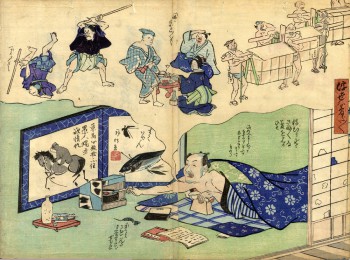

Ukiyo ha yumeda yumeda (Fleeting life is a dream, a dream)
Artist unknown, circa 1865-68 (Keio period)
Shoshoku gotakusen (Money-making Prophecies for Various Occupations)
Artist Unknown, 1855 (Ansei 2)

Ukiyo ha yumeda yumeda (Fleeting life is a dream, a dream)
Artist unknown, circa 1865-68 (Keio period)

Shoshoku gotakusen (Money-making Prophecies for Various Occupations)
Artist Unknown, 1855 (Ansei 2)
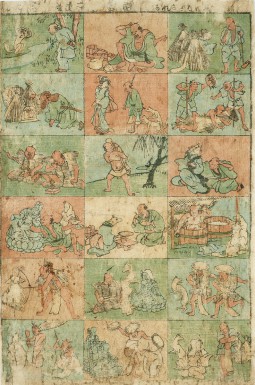
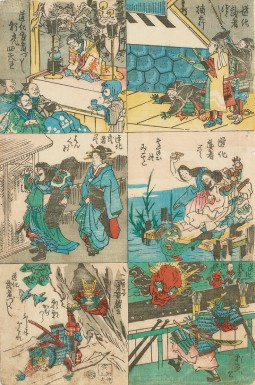
Kitsune ni baka sareru (To be deceived by a fox)
Utagawa Yoshitora, 1857 (Ansei 4)
Doke musha zukushi (A complement of amusing warriors)
Utagawa Kuniyoshi, 1858 (Ansei 5)

Kitsune ni baka sareru (To be deceived by a fox)
Utagawa Yoshitora, 1857 (Ansei 4)

Doke musha zukushi (A complement of amusing warriors)
Utagawa Kuniyoshi, 1858 (Ansei 5)
■Edo giga as caricatures
The museum holds a large collection of Edo shogunate caricatures which were popular from around the Tenpo period (1830-1844). Caricatures are pictures that use humor to indirectly criticize shortcomings by making observations on politics, society, and even human beings themselves.
In an era in which the shogunate's unreasonable suppression of ukiyoe (pictures of the floating world) and yakushae (actor prints) became even stricter, satirical ukiyoe which slipped through the cracks of the ban were a hit among the masses and became an opportunity to develop various methods of expression.
This simultaneously led to improvements in the literacy of common people who read the satire. The popularity of caricatures was an essential element for subsequent developments in manga culture.


